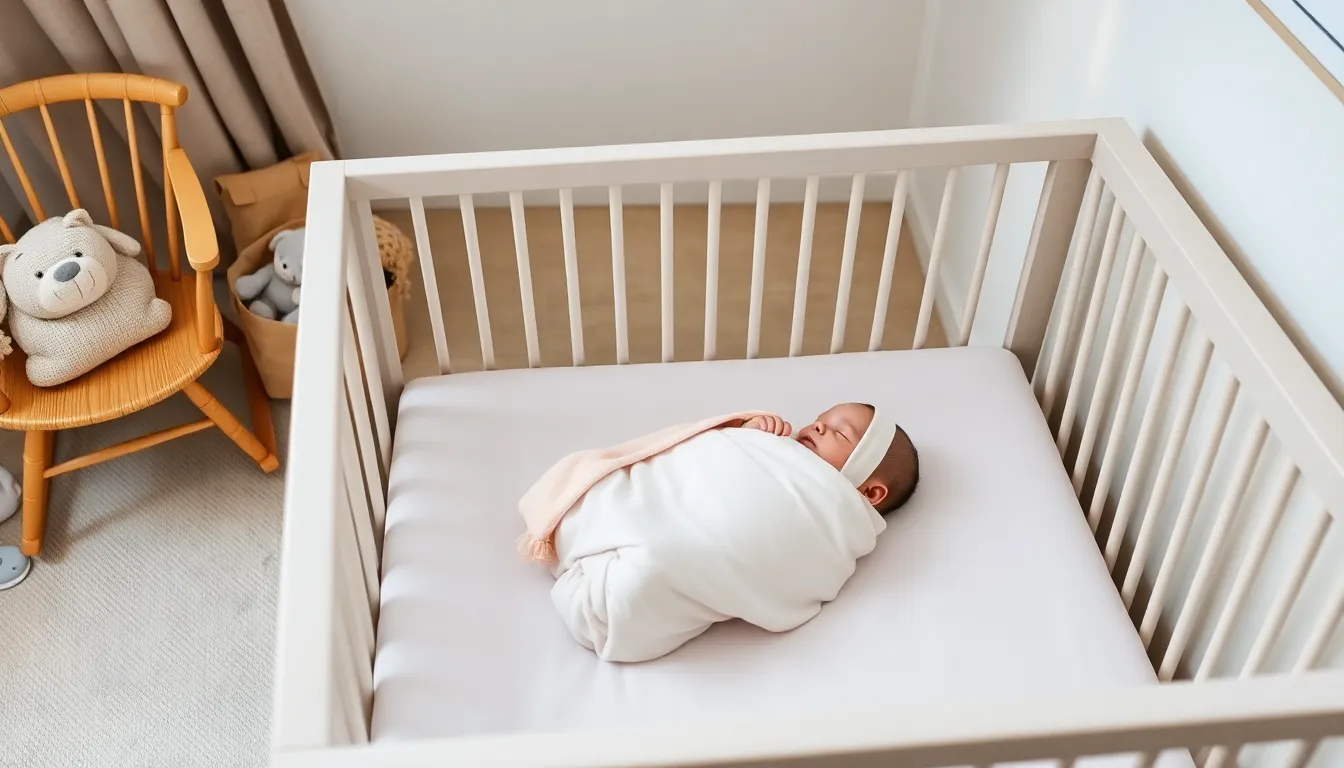Swaddling is like wrapping a baby in a warm hug, and if you’ve ever been privileged to see a swaddled infant, you know how adorable they look. But just like that all-you-can-eat buffet, there’s a point where too much of a good thing can lead to discomfort. So, when is it time to retire those snug wraps? Let’s explore the ins and outs of swaddling, from benefits to expert advice, and help you navigate this crucial phase of parenting with confidence (and a sprinkle of humor). After all, nobody wants a baby Houdini on their hands, right?
Table of Contents
ToggleUnderstanding Swaddling and Its Benefits

Swaddling involves snugly wrapping an infant in a blanket to mimic the cozy confines of the womb. It’s not just for aesthetics: this age-old practice boasts several benefits. For starters, swaddling can help reduce the startle reflex, which often wakes babies from their peaceful slumber. A securely wrapped baby feels more secure and may actually sleep better. Also, swaddling can prevent them from scratching their delicate skin, a common concern among new parents. Beyond practicality, the act of swaddling can create a comforting routine, promoting relaxation not just for the baby but also for the parents.
Signs That It’s Time To Stop Swaddling
Recognizing the right moment to stop swaddling requires a bit of observation. If a baby is consistently breaking free from their swaddle, it might be time to let go. Another sign is if the child begins showing signs of rolling over. Rolling usually signifies that they are developing the ability to control their movements, which makes swaddling a potential risk. Also, if the baby seems less content while swaddled, it could be an indication they prefer the freedom of movement. Parents should also watch for changes in sleep patterns or increased fussiness as subtle cues suggesting the transition out of swaddling is necessary.
Age Guidelines for Stopping Swaddling
While every baby is unique, there are general age guidelines that can help parents decide when to stop swaddling. Most experts recommend beginning the transition around four to six months of age. At this stage, babies typically have better neck and head control, making it safer for them to sleep without a swaddle. But, if they’re already rolling before this age, it’s essential to stop swaddling immediately for safety reasons. This age window isn’t just arbitrary: it aligns with significant developmental milestones that affect a baby’s ability to thrive in their sleep environment.
Transitioning Out of Swaddling
Transitioning can feel daunting, but it doesn’t have to be. Start gradually by swaddling with one arm out, allowing the baby to adjust to the change with minimal stress. Once they’ve become accustomed to one arm being free, try swaddling with both arms out or switching to a sleep sack. These alternatives offer similar security as swaddles but allow for greater movement. Keeping a consistent bedtime routine during this transition also helps: the familiar activities can ease the baby’s journey into a swaddle-free world.
Common Challenges and Solutions
The transition from swaddling can bring about some challenges. One common issue is that babies may struggle to sleep without the snugness they’ve grown accustomed to. If this happens, try using a gentler transition method like a weighted sleep sack. Another challenge is the potential for increased startle reflex, which could wake the baby at night. In such cases, using a pacifier may provide comfort and reassurance. It’s essential to remain calm and patient, as this transition phase is also new for the baby.
Expert Recommendations and Parental Insights
Experts unanimously agree that safety is paramount when deciding to stop swaddling. Pediatricians suggest closely monitoring the baby for rolling or any signs of discomfort while swaddled. Many parents share their experiences, highlighting that patience and gradual changes often led to smoother transitions. Support groups provide invaluable advice too, mentioning that some babies took little time to adjust, while others may need extra comfort items like a favorite toy or blanket to soothe them. Tapping into this community can provide not only knowledge but also reassurance.



